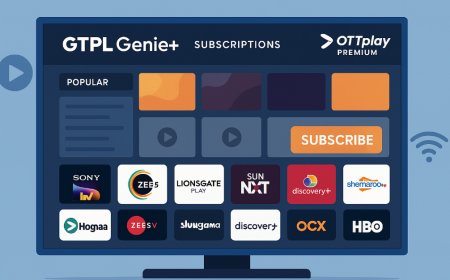California Cracks Down: eCommerce Brands Get 3 Months to Eliminate Dark Patterns Under CCPA
California regulators are giving online retailers a three-month window to eliminate manipulative "dark patterns" under CCPA. Here’s what brands must do now.

Introduction: The Countdown to Compliance Begins
California is once again leading the charge on digital consumer rights. In a significant development, the state’s regulators have issued a strong directive to eCommerce companies operating under the California Consumer Privacy Act (CCPA): eliminate all forms of dark patterns within the next three months—or face legal action.
This move signals a clear warning to online retailers and digital marketers: deceptive design tactics that manipulate consumer behavior will no longer be tolerated. With enforcement just around the corner, it’s time for brands to take a serious look at how they collect data, secure consent, and communicate privacy choices.
What Are Dark Patterns?
“Dark patterns” refer to UI/UX design practices intended to trick users into actions they may not otherwise take—such as subscribing to unwanted emails, making unintended purchases, or unknowingly sharing personal data. These patterns exploit human psychology and create friction in opting out of things that should be easy to refuse.
Common examples include:
-
Hidden opt-out checkboxes during checkout
-
Confusing unsubscribe flows
-
Trick wording like double negatives
-
Pre-checked boxes for consent or subscriptions
-
Guilt-tripping messages that discourage users from declining offers ("Are you sure you want to miss out?")
These tactics are increasingly being called out for violating consumer trust and undermining privacy rights—especially in the context of data collection.
CCPA Enforcement Enters a New Era
The California Privacy Protection Agency (CPPA), which oversees enforcement of the CCPA, has made it clear that it will be targeting companies using dark patterns to obstruct user choices—especially around consent, data deletion, and opting out of data sales.
The new timeline gives companies three months to audit and amend their digital interfaces. While this isn’t the first time CCPA enforcement has tightened, it’s the most focused crackdown yet on user experience design. And it signals the regulators’ intention to evolve privacy enforcement beyond just back-end compliance—placing the front-end user journey under scrutiny.
Why This Matters for eCommerce
eCommerce brands are among the biggest offenders—and the most exposed. From manipulating checkout flows to tricking users into recurring subscriptions, many online retail platforms rely on practices that will soon be deemed illegal under California law.
This new enforcement window is not just a compliance issue—it’s a business risk. Failing to comply could result in:
-
Regulatory fines (up to $7,500 per intentional violation)
-
Lawsuits or consumer complaints
-
Brand reputation damage
-
Loss of consumer trust and retention
For California-based users—or any user covered under CCPA—the experience must now be transparent, fair, and easy to navigate.
From UX to Legal Risk: How Design Is Now Regulated
Traditionally, UX designers focused on optimizing for conversions and engagement. But under CCPA and other privacy laws, design choices are now legal liabilities. Regulators are looking at how interfaces guide—or misguide—user consent.
For example:
-
A “Reject All” option must be as prominent and accessible as “Accept All”
-
Privacy settings must not be buried in multiple pages
-
Withdrawal of consent should be as easy as giving it
-
Default settings should not assume agreement
This shift reflects a growing consensus: user interface design cannot be deceptive—especially when it concerns personal data.
What Businesses Must Do in the Next 90 Days
For eCommerce businesses, the next three months are critical. Here’s a practical checklist for compliance:
1. Conduct a UX Audit
Evaluate all customer-facing interfaces where data is collected—sign-up forms, checkout pages, cookie banners, and unsubscribe flows.
Ask:
-
Are users clearly informed of their rights?
-
Can they easily refuse or revoke consent?
-
Are choices presented neutrally without nudging?
2. Review Consent Mechanisms
If your cookie banners or email sign-ups rely on pre-checked boxes or passive consent, you’re likely at risk.
All consent must now be:
-
Informed (clear purpose of data use)
-
Freely given (no manipulation or pressure)
-
Revocable (easy to withdraw anytime)
3. Train Your UX and Marketing Teams
This isn’t just a legal issue—it’s a design and communication issue too. Your design, marketing, and product teams must understand that privacy-first UX is the new standard.
Encourage collaboration between legal, design, and marketing departments to build user journeys that are both compliant and trustworthy.
4. Update Your Privacy Policy
Your policy must reflect your updated practices. Clearly state how users can control their data, opt out of sales, and manage preferences.
5. Monitor and Test
Even after updates are made, keep testing and monitoring how users interact with your interfaces. Use analytics to identify confusing or misleading flows—and fix them.
Beyond Compliance: A Competitive Advantage
While the upcoming enforcement may seem like a challenge, it’s also a chance to stand out as a privacy-conscious brand. In an era where consumers are increasingly aware of how their data is handled, being proactive can build loyalty.
By offering clear, respectful choices and avoiding manipulation, brands can:
-
Strengthen brand trust
-
Reduce complaints and churn
-
Attract privacy-conscious consumers
A transparent user experience isn’t just ethical—it’s a strategic business decision.
Looking at the Bigger Picture: More States May Follow
California’s stance on dark patterns is likely a precursor to broader regulation. Other U.S. states with their own privacy laws—like Colorado, Connecticut, and Virginia—are expected to adopt similar standards.
Globally, the EU’s GDPR already prohibits manipulative consent flows, and new digital regulations in regions like Australia and Canada are following suit.
For companies that operate across markets, this means the smartest move is not short-term compliance—but building global privacy standards into design systems and frameworks.
Who Is Most at Risk?
While all online businesses should prepare, certain sectors are more vulnerable to enforcement:
-
Retail and fashion brands with promotional pop-ups and loyalty programs
-
Subscription services with complex cancellation flows
-
SaaS platforms that use bait-and-switch pricing or automatic opt-ins
-
Digital marketplaces that bury privacy options deep in account settings
If your business falls into these categories, take immediate steps to evaluate your practices and ensure they align with the CCPA’s spirit of fairness and transparency.
Conclusion: From Loopholes to Leadership
The message from California is loud and clear: manipulative design tactics will no longer fly—not in privacy compliance, and not in user relationships.
What's Your Reaction?
 Like
0
Like
0
 Dislike
0
Dislike
0
 Love
0
Love
0
 Funny
0
Funny
0
 Angry
0
Angry
0
 Sad
0
Sad
0
 Wow
0
Wow
0












































